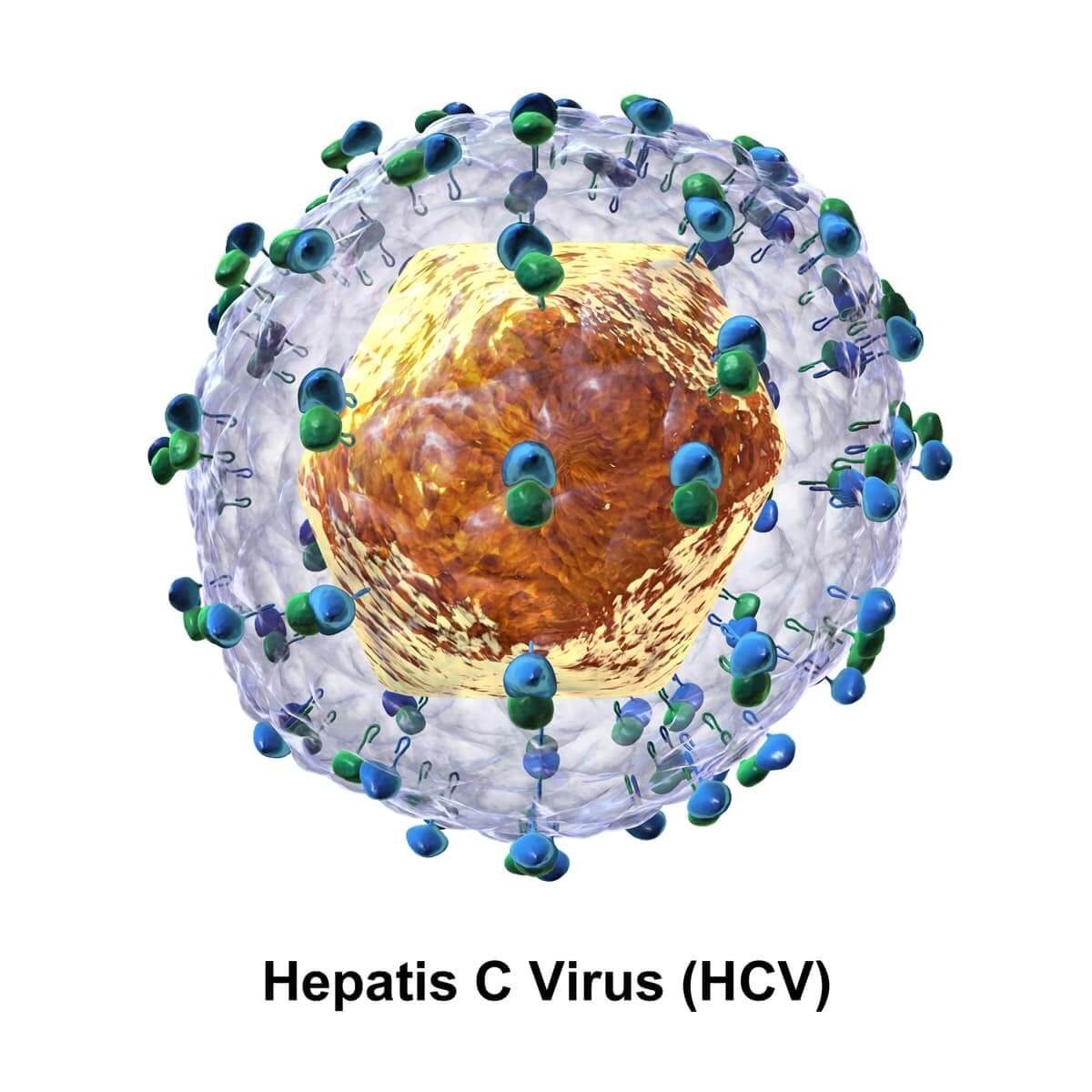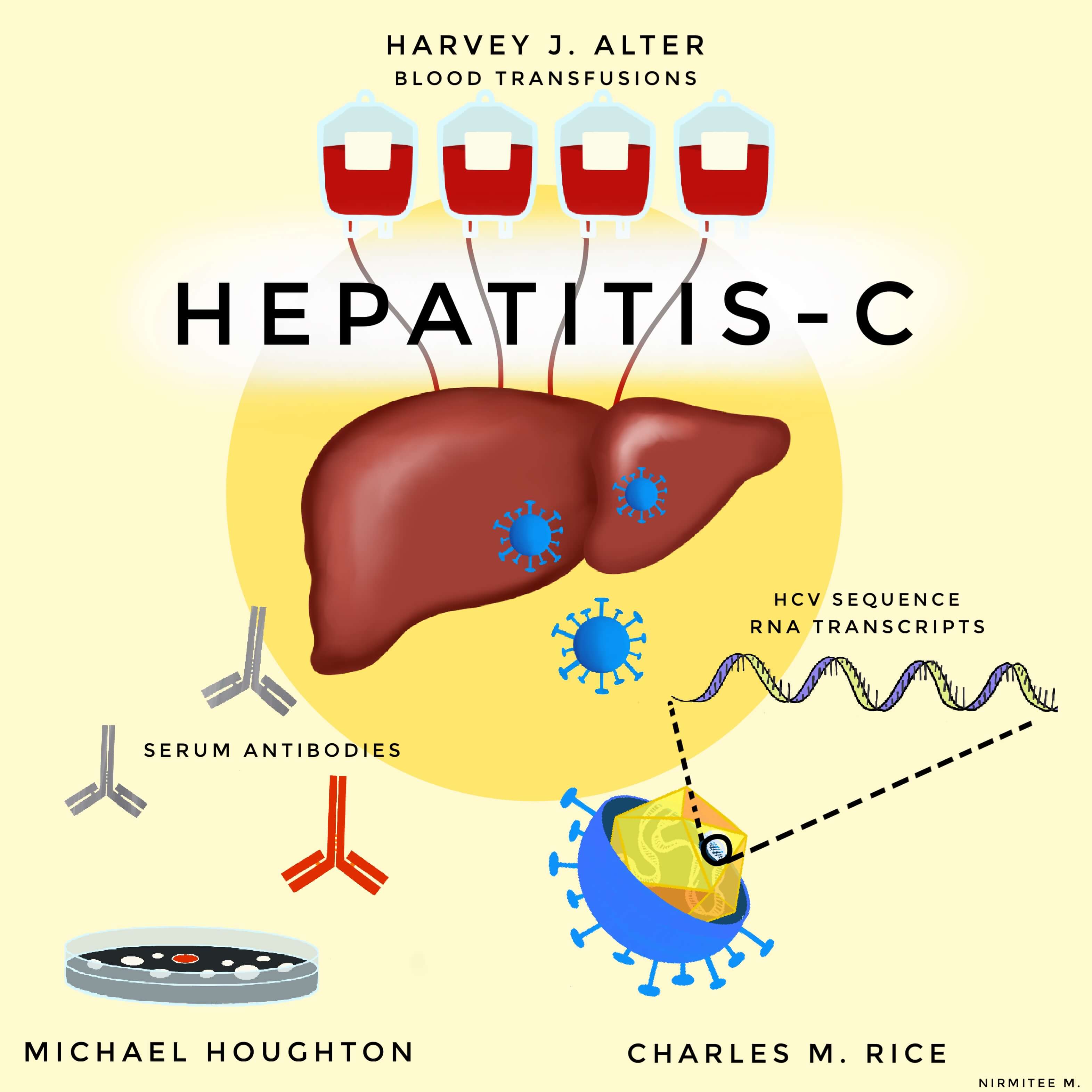The Nobel Prize in Hepatitis C
Review
Maithili Datta

This year the Nobel Prize came with a lot of joy to the scientific community. On one hand we got CRISPR as a revolutionary discovery, on the other hand, the hope to eliminate the Hepatitis C virus got accelerated. The HCV which killed millions of people worldwide can now be suppressed and that brings a way to get rid of this deadly illness.
Tweet
‘Hepatitis-C’, a phrase once enough to create mass panic among people in the late 1900s, is still the most common chronic blood-borne infection in the United States with approximately 170 million people infected by this virus worldwide annually. Hepatitis is the medical term for liver inflammation where the word is a combination of Greek words for liver and inflammation. It is primarily caused by viral infections, but environmental factors and alcohol consumption play a role behind the onset of this disease. There are five common types of hepatitis viruses, termed as A, B, C, D and E. Among them hepatitis B and C create chronic and lifelong infections that can lead to serious liver disease. The hepatitis C virus (HCV) keeps mutating rapidly, making it difficult to create an effective vaccine. The HCV is the leading cause of cirrhosis (late stage of scarring of the liver), and hepatocellular carcinoma (a type of cancer).
The three Nobel Prize awardees this year, Harvey J. Alter, Michael Houghton and Charles M. Rice contributed to the fight against this blood-borne disease revealing the cause of the remaining unexplained cases of chronic hepatitis. HCV was initially isolated from the serum of a person with ‘non-A, non-B’ hepatitis in 1989 and stated as the sole reason for approximately 90% of the above-mentioned unexplained hepatitis in the U.S. The Hepatitis C virus is an RNA virus that belongs to the Flaviviridae family and it replicates in the hepatocytes (chief functional cells of the liver). Continuous cell-to-cell spread and rapid production of the virus along with the lack of T-cell immune response to HCV antigens accelerate the viral infection. Frequent HCV mutations have made the search for an HCV vaccine challenging. As it blood-borne disease, the risks of transmission include intravenous drug use, high-risk sexual activity, solid organ transplantation from an infected donor, occupational exposure, haemodialysis, household exposure, birth to an infected mother, and intranasal cocaine use. According to the U.S. The chronicity of HCV was found to be lower in younger individuals and in women.
Earlier, it was established that there are two main types of hepatitis, named as Hepatitis A and B. The former is transmitted through polluted water or food and it is less likely to affect the patient in long-term, whereas the latter transmits through blood and bodily fluids, leading to chronic conditions which causes serious damage to the health system which further leads to cirrhosis or liver cancer. Blood borne hepatitis causes more than a million deaths per year worldwide. Baruch Blumberg received the Nobel Prize in 1976 for the discovery of Hepatitis B virus that was causing blood-borne hepatitis which opened the path to the development of an effective vaccine. Tests for hepatitis A virus were also developed around this time but the risk factor is quite low in such cases. At that time, Harvey J. Alter was examining samples taken from the patients who had received blood transfusions, at the US National Institute of Health. After the discovery of blood-borne Hepatitis B virus, the number of cases of transfusion-related hepatitis was significantly lowered. Alter stated that a large number of cases remained unexplained and demonstrated that the blood from these hepatitis patients transmits the disease to chimpanzees. The subsequent studies reported that the unknown infectious agent had characteristics of a virus and further investigations defined this disease as a distinct form of chronic viral hepatitis which was then known as ‘non-A non-B’ Hepatitis.
 Illustration by: Nirmitee Nitin Mulay
Although the existence of this hepatitis from an unknown infectious agent had been proven, the identification of the virus was still required. Michael Houghton, then working in a pharmaceutical company Chiron, took the responsibility and created a collection of DNA fragments from the nucleic acids obtained from an infected chimpanzee. Majority of these fragments came from the genome of the chimpanzee itself, but based on their assumption that antibodies against the virus would be present in the blood samples taken from the patients, the blood of human beings consist of serum and blood cells. They collected the serum from the blood samples and investigated it to identify if there are any DNA fragments, from which viral protein of HCV can be synthesised. If yes, that will lead to the conclusion that those DNA fragments are cloned from Hepatitis C virus, which will lead to further conclusion about the presence of Hepatitis C virus in their blood samples. Following this experiment, they found one positive clone and studied that. This study revealed that this clone was derived from the novel RNA virus belonging to the Flavivirus family and later, it was named as Hepatitis C virus.
Illustration by: Nirmitee Nitin Mulay
Although the existence of this hepatitis from an unknown infectious agent had been proven, the identification of the virus was still required. Michael Houghton, then working in a pharmaceutical company Chiron, took the responsibility and created a collection of DNA fragments from the nucleic acids obtained from an infected chimpanzee. Majority of these fragments came from the genome of the chimpanzee itself, but based on their assumption that antibodies against the virus would be present in the blood samples taken from the patients, the blood of human beings consist of serum and blood cells. They collected the serum from the blood samples and investigated it to identify if there are any DNA fragments, from which viral protein of HCV can be synthesised. If yes, that will lead to the conclusion that those DNA fragments are cloned from Hepatitis C virus, which will lead to further conclusion about the presence of Hepatitis C virus in their blood samples. Following this experiment, they found one positive clone and studied that. This study revealed that this clone was derived from the novel RNA virus belonging to the Flavivirus family and later, it was named as Hepatitis C virus.
The identification of the virus raised another - question whether the virus alone can infect and cause Hepatitis? Charles M. Rice, researcher at Washington University in St. Louis. Rice, along with other groups working on RNA viruses, speculated that this region at the end of the genome of Hepatitis C virus, which are not yet characterised, may play an important role in viral replication. Rice created an RNA variant of Hepatitis C virus through genetic engineering and injected it into the liver of chimpanzees. The virus was detected in the blood and the pathological changes similar to those occurring in humans, were observed in chimpanzees. This experiment gave the conclusion that Hepatitis C virus alone could cause the unsolved cases of transfusion-generated hepatitis.
This path-breaking discovery was important because for the first time in history, the disease could now be cured. The Nobel Prize in Physiology this year is a landmark achievement as the work will increase the availability of highly sensitive blood tests and eliminate post-transfusion hepatitis in around the world. Their discovery initiated the development of antiviral drugs rapidly against the hepatitis C virus. Hepatitis C remains a major global health concern, but the opportunity now exists to eliminate the disease.
Bibliography
Maithili is an integrated graduate from the integrated BS-MS program at IISER Kolkata. She is currently pursuing her extended thesis at IISER Kolkata. She works at the protein engineering lab and she is interested in Biochemistry.
signup with your email to get the latest articles instantly